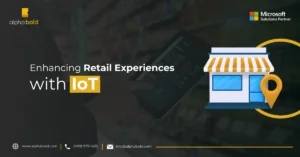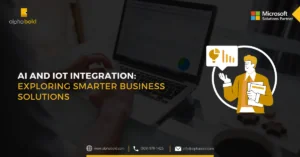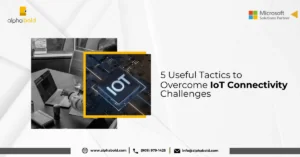Introduction
Every day, the world is leading towards modernization and advanced technologies. In the face of this modernization, the Internet of Things (IoT) is fast becoming one of the most competitive domains. A leading market research survey has claimed that more than 27 billion connected IoT devices will be worldwide by 2025. Moreover, IoT connections (e.g., connected cars, smart home devices, connected industrial equipment) are more than non-IoT connections (smartphones, laptops, and computers).
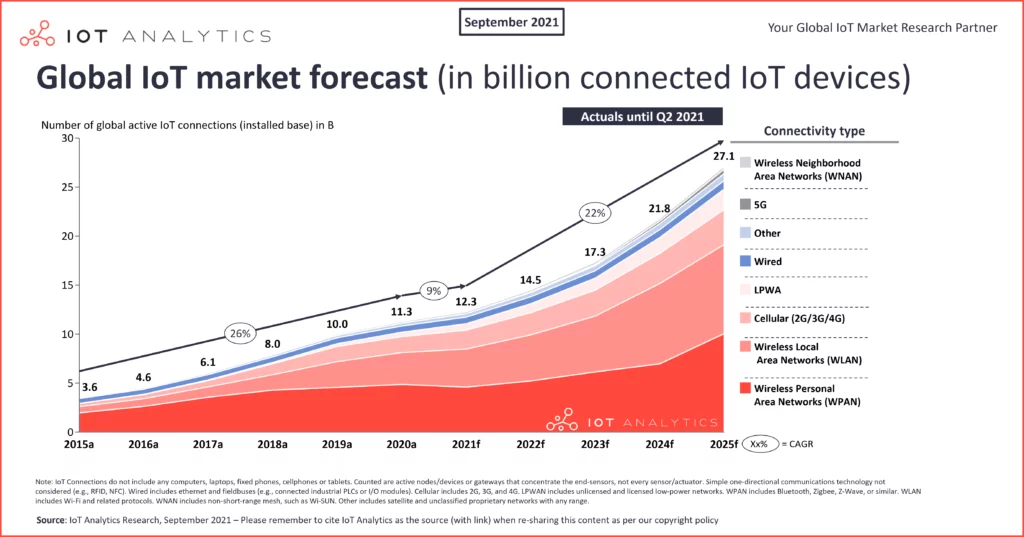
Source: IoT Market Forecast
An Internet of Things (IoT) ecosystem mainly consists of app-enabled smart devices. These devices use embedded systems, communication hardware, and sensors to collect and send data acquired from various sources. The data is sent to the cloud or a local server through an IoT gateway or edge device. Moreover, IoT can also use artificial intelligence (AI) and machine learning to make data-collecting processes more manageable and dynamic.
Read more: How has Internet of Things impacted Business & Economy
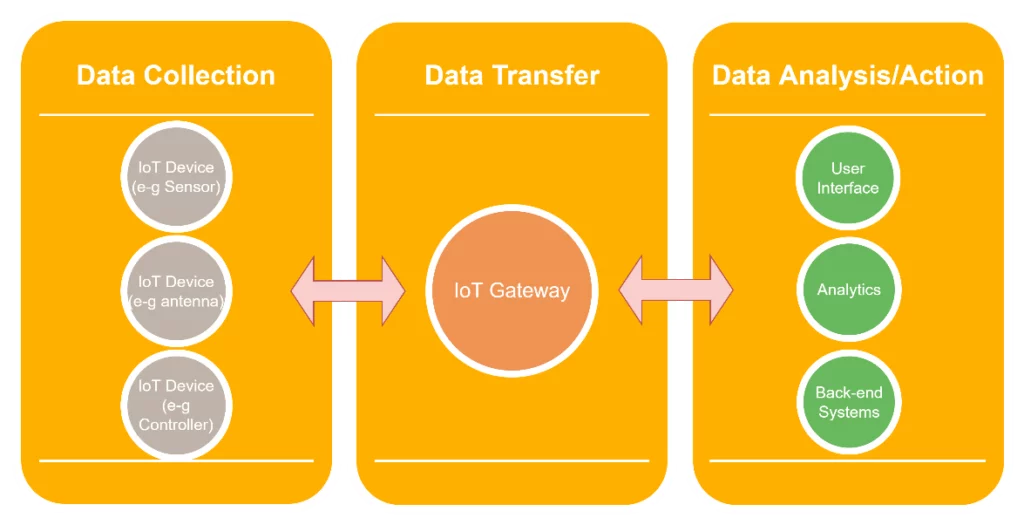
IoT applications exist in multiple market segments, such as smart homes, wearables, healthcare, logistics, manufacturing, utilities, and agriculture. IoT helps enterprises gain real-time insights into how systems work, from the machine’s performance to supply chain and logistics operations. In addition, the IoT enables enterprises to automate processes and reduce labor costs. It also reduces waste, improves service delivery, makes the manufacturing and delivery of goods cost-effective, and provides transparency to customer transactions.
In a nutshell, IoT is capturing every aspect of our lives. The Internet of Things ecosystem can be divided into two major subgroups: consumer IoT and industrial IoT.
Learn more about our IOT Services
Elevate your IoT Strategy Today!
AlphaBOLD is here to guide you through the complexities of IoT solutions. From smart homes to smart industries, let's unlock the full potential of your IoT projects together.
Request a ConsultationConsumer IoT vs. Industrial IoT: A Brief Comparison
Although there are some similarities in the definitions, there are significant differences in how real-world consumer and industrial IoT solutions are implemented. Fig 3 shows a brief comparison between Consumer IoT and Industrial IoT.
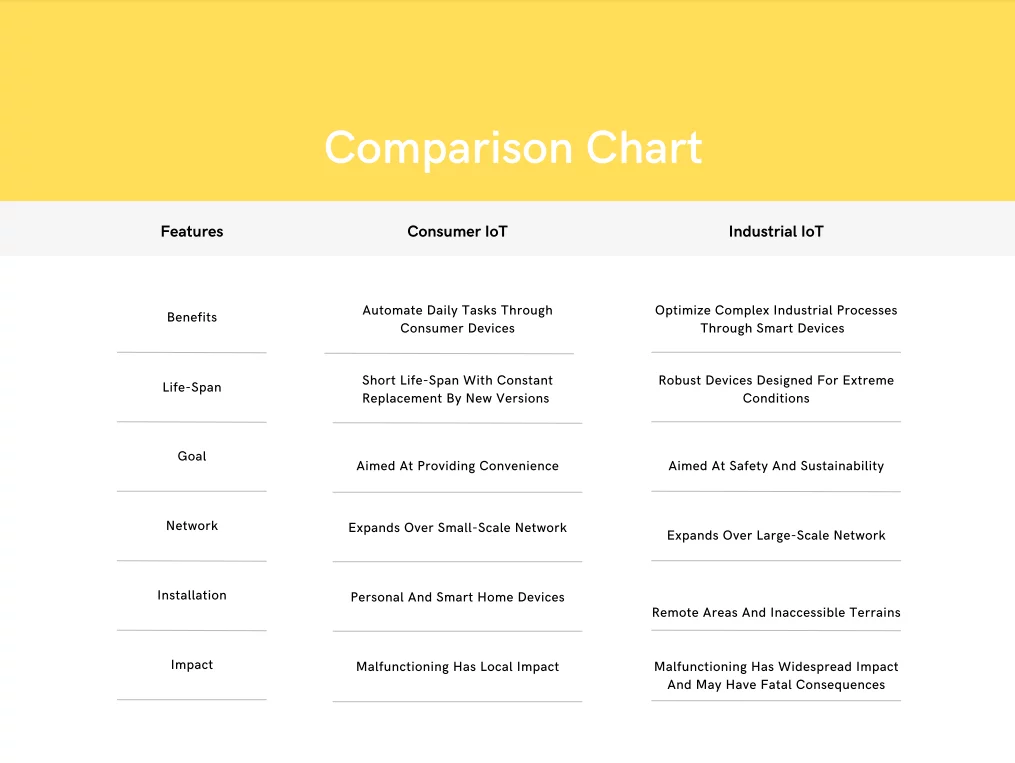
These differences are linked to a demanding and complex industrial environment that consumer devices rarely encounter. In addition, the factory environment is characterized by extreme humidity, temperature, and high-density concrete and steel structures that prevent effective wireless communication. Moreover, the impact of network breakdowns also varies significantly between the two. Imagine if your Fitbit device fails to send data. This failure will not be as critical as a tank-level sensor failing to send data, resulting in long production outages. These fundamental distinctions should be managed when designing a versatile IoT architecture and selecting the right technology.
Applications of Consumer IoT
Consumer IoT solutions emphasize individual users through smart home applications, wearables, and personal monitoring devices.
Consumer IoT solutions are mainly subdivided into two types:
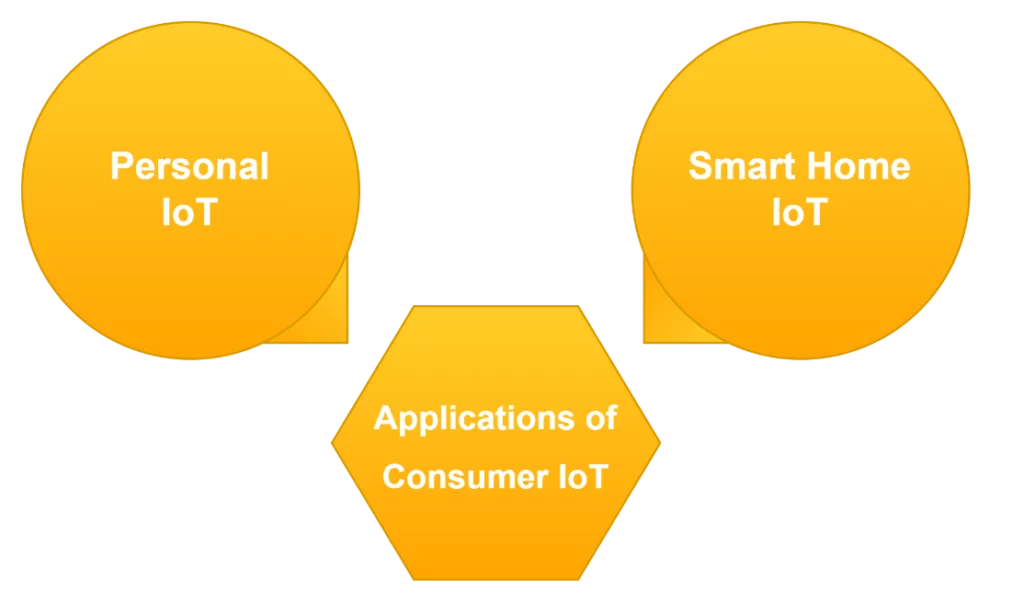
Personal Internet of Things:
Personal IoT devices include a range of devices. Some of them are as follows:
- Smart Clothing
- Examples: Owlet Smart Sock and Samsung suits with NFC.
- Smart Watch
- Examples – Apple Watch and Fitbit.
- Battery power-sharing between two smartphones
- Examples – Donor Cable bracelets by NAR Mobile.
- Hearable
- Examples – Air Pods, Google Pixel Buds.
- Smart glass
- Examples – Smart Glasses from Ray-Ban and VUZIX BLADE.
Smart Home Internet of Things:
Smart Home IoT devices and applications are related to home automation products. Some examples are as follows:
- Security
- Examples – Bitdefender BOX IoT security solution and Nest Cam indoor camera.
- Voice Assistance
- Examples – Google Home and Amazon Echo (2nd Generation) voice controller speakers.
- Smart Lighting
- Examples – Smart Switch Plate by Concord Technologies and Philips Hue Smart Bulbs.
- Smart Kitchen Gadgets
- Examples – Smart thermometer iGrill by Weber, Smart Optimal brew by Mr. Coffee, and Smart cooker by Crook-Pot.
Read more: Top 6 Open Source IoT Frameworks: Which One is Best for You?
Applications of Industrial IoT
Contrary to Consumer IoT, Industrial IoT is related to the automation of industrial systems. These solutions promise a dramatic increase in productivity and efficiency. Some of the top IIoT applications are as follows:
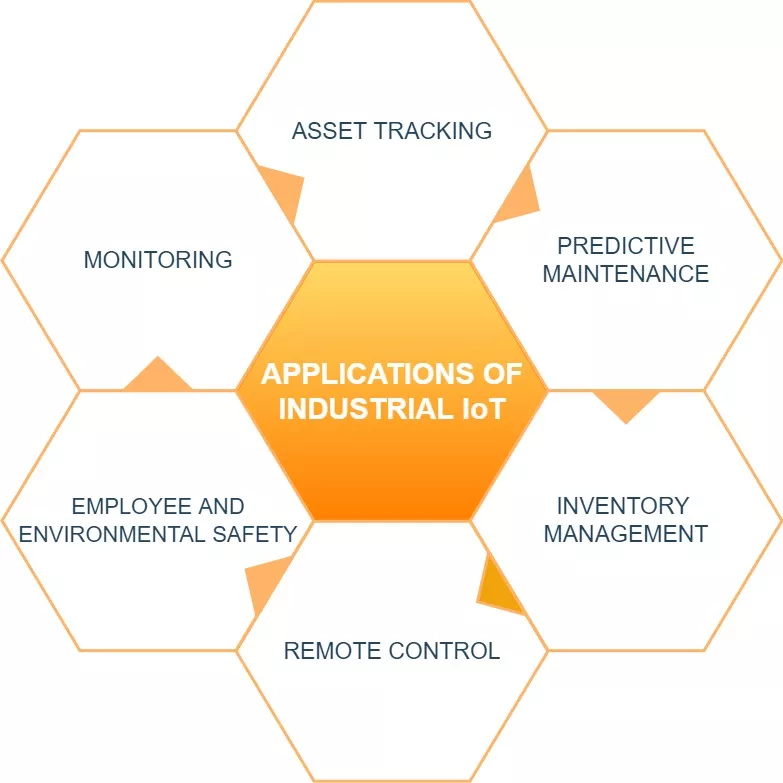
Asset tracking:
Predictive maintenance:
Predictive maintenance enables us to detect the need for a machine to be maintained before a crisis occurs. This system works on the data captured via sensors and sends alerts ahead of time to ensure the industrial equipment is functioning optimally.
Inventory management:
Remote monitoring and control:
With constant updates on industrial machinery’s geolocation and mechanical status, IIoT sensors can change settings remotely, activate or de-activate equipment, or halt processes when needed. The ability to remotely control the equipment at different geographic locations gives the implementing organizations an unprecedented ability to oversee advances in their production in real time while also analyzing historical data about their processes.
Employee and environmental safety:
Innovate with IoT: Begin your Transformation Journey!
AlphaBOLD is your trusted partner in IoT solutions. Discover the potential of IoT and start your transformation journey today!
Request a ConsultationInternet of Things (IoT) Market Size and Future Trends
The Internet of Things market continues to grow despite COVID-19’s impact on the semiconductor industry, which has led to chip shortages and supply chain issues. According to a market survey, there will be more than 27 billion IoT connections by 2025. Additionally, the market is expected to grow more aggressively with the development of wireless network technology (5G), advanced data analytics, the cost reduction of connected devices, and the increasing adoption of cloud platforms.
Moreover, with the massive expansion of the e-commerce industry, the retail sector is also witnessing significant global growth. Hence, retailers utilize IoT solutions to improve operational efficiency and enhance the customer experience to gain competitive advantages. The increasing adoption of smart payment solutions is a significant factor driving the adoption of IoT solutions in the studied segment.
Read more: Harnessing IoT Power Safely: Key Features for Effective IoT Security Solutions in 2024
In addition, IoT is a key factor enabling the expansion of emerging technologies such as smart cars, smart manufacturing, home automation, and smart energy projects.
Conclusion
The Internet of Things technology helps connect various smart devices to optimize operations and data sharing. The data is collected through different sensors, machines, smartphones, and wearables and is further used to improve the experience and streamline the processes. We have covered different market verticals and IoT subsets in this blog. Additionally, we have also shared future IoT market trends and insights. Stay tuned to our upcoming blogs to learn more about IoT use cases in the industry and among consumers.
Explore Recent Blog Posts



